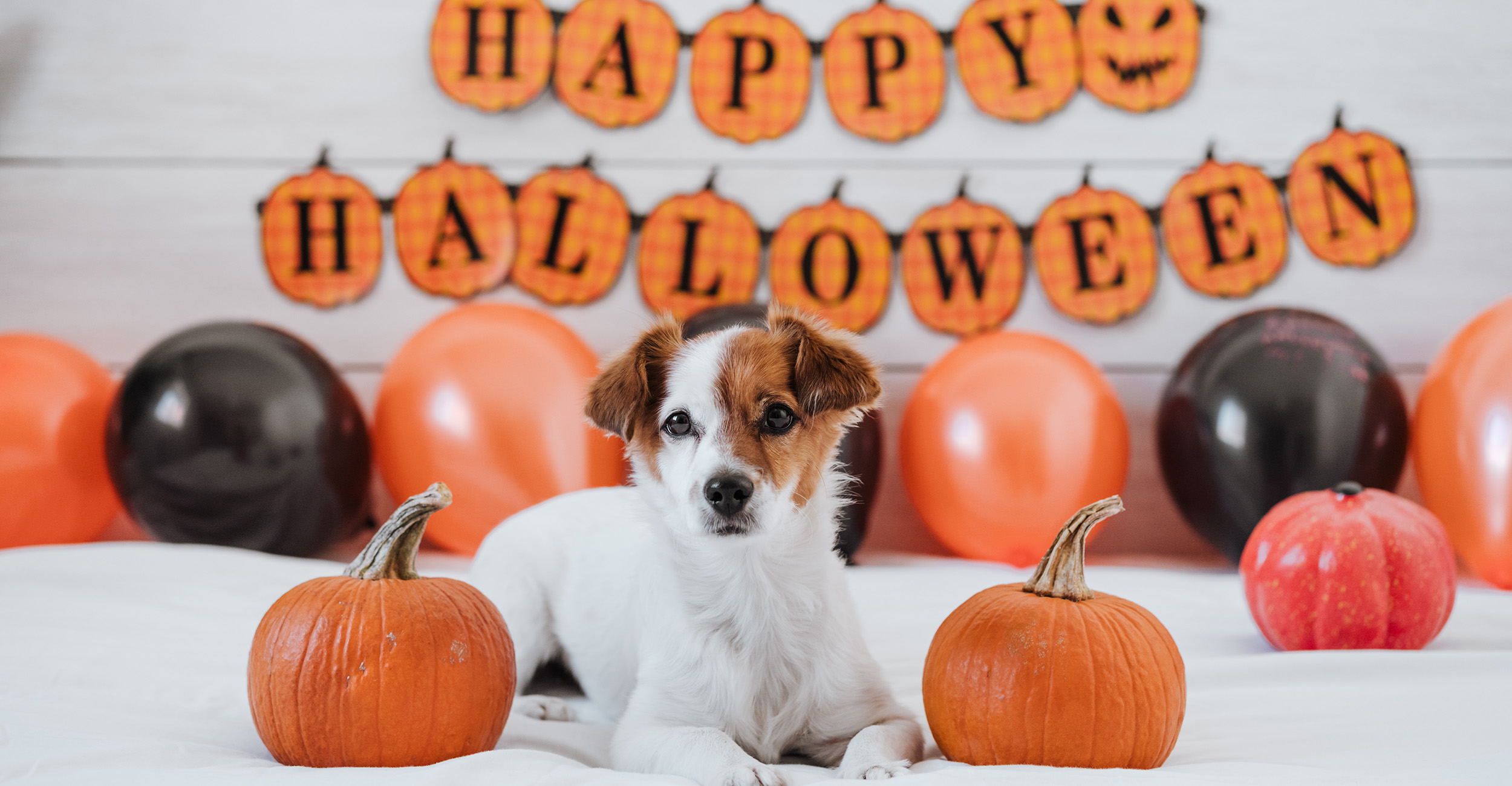
Veterinary Viewpoints: Keeping your pets safe this Halloween
Tuesday, October 4, 2022
Media Contact: Taylor Bacon | Public Relations and Marketing Coordinator | 405-744-6728 | taylor.bacon@okstate.edu
Halloween is a fun time of dressing up, decorating and enjoying sweet treats. Pets are part of the family so of course we want to include them in the fun, but we must be aware of Halloween hazards.
When it comes to treats, keep all candy out of pets’ reach. Candy is dangerous for pets, especially chocolate and sugar-free treats. Veterinary emergency services see a high number of intoxication cases during this holiday, as many are unaware of its toxic effects on pets. Instead, opt for holiday treats created for pets, which can be purchased or even made at home, just be sure that they don’t contain artificial sweeteners.
There are few things more adorable than a pet in a costume, but we must pay attention to our pet’s cues and avoid forcing a pet into wearing a costume. Some pets are used to wearing clothes, but many are not and some costumes can be distressing. Instead, try getting them a themed bandana or collar.
Aside from treats and costumes, there are other hazards we can expose pets to during Halloween. Here are some tips from our Behavior Service on how to make sure your pets stay happy and safe on Halloween:
- When trick-or-treaters come for candy, knocking on the door or ringing the doorbell can be stressful for some pets. Make sure they have a safe place in the house to stay during trick-or-treating to avoid them running away when the door is open.
- Make sure your pet has some form of identification. A microchip is the best option.
- Candles and lit pumpkins can pose a risk to a curious kitten or puppy who may accidentally get too close to sniff or explore, potentially causing its fur to catch fire.
- Do not take your dogs with you to trick-or-treat. It will be dark outside and they can get scared, causing them to run away and be at risk of getting hit by a car.
- Be wary of decorations that can be swallowed, get stuck in their bellies or make them intoxicated. Also look out for the potential of electric shock. Reconsider items such as balloons, string decorations, decorations containing toxic materials and electrical cords.
Let’s make sure everyone is safe during Halloween this year!
About the author: Dr. Leticia Fanucchi is a clinical assistant professor in the Department of Veterinary Clinical Sciences at Oklahoma State University’s College of Veterinary Medicine. She is the head of the behavior service at the OSU College of Veterinary Medicine’s Teaching Hospital. Her research interests are applied behavior and animal well-being.
Veterinary Viewpoints is provided by the faculty of the OSU Veterinary Medical Teaching Hospital. Certified by the American Animal Hospital Association, the hospital is open to the public providing routine and specialized care for all species, as well as emergency care. Call 405-744-7000 for an appointment or see more information at vetmed.okstate.edu.
OSU’s College of Veterinary Medicine is one of 33 accredited veterinary colleges in the United States and the only veterinary college in Oklahoma. Established in 1948, the CVM is dedicated to the education and development of skilled veterinarians who are committed to the protection of human and animal health.
